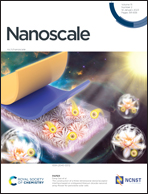Maximizing spin Hall magnetoresistance in heavy metal/crystalline metallic ferromagnet multilayers with opposite spin Hall angles†
Abstract
Interconversion between charge and spin through spin–orbit coupling at a heavy metal (HM)/ferromagnet (FM) interface plays a key role in determining the amplitude of spin Hall magnetoresistance (SMR), which might maximally facilitate its applications in novel electronics. In this study, annealed NiFe films grown on MgO (100) substrates capped with Pt and Ta are reported to exhibit a maximum SMR. When the measuring temperature is reduced, the SMR rises and is significantly larger in crystalline NiFe than in amorphous NiFe. Another physical process for the negative SMR in Ta(dTa)/Pt(3 nm)/annealed NiFe samples is attributed to the interfacial spin–orbit coupling (ISOC) driven spin current (Js) generation and its reciprocal effects. Moreover, spin accumulation is enhanced at Pt(3 nm)/annealed NiFe interfaces after capping with a Ta layer, which functions as a spin sink in a certain thinner thickness range. With the cooperative interaction of choosing the proper Ta's thickness and annealing NiFe layers, the maximum SMR is obtained. Our results pave the way for rational interface engineering to enhance SMR for developing high-efficiency spintronic devices.



 Please wait while we load your content...
Please wait while we load your content...